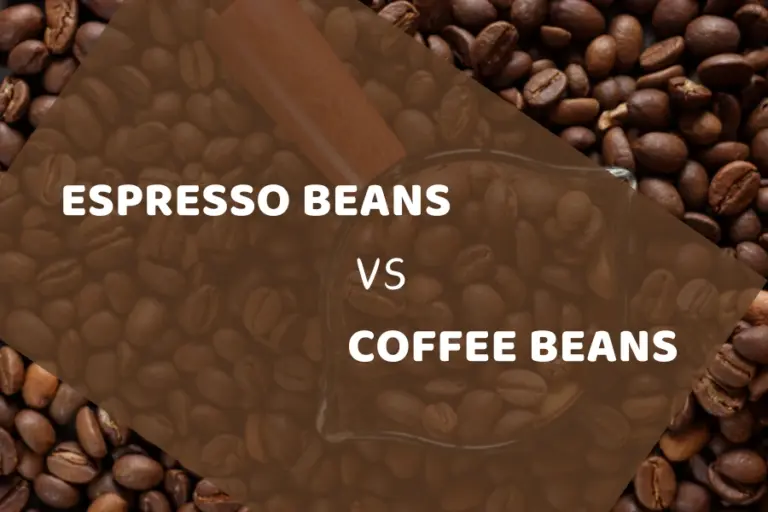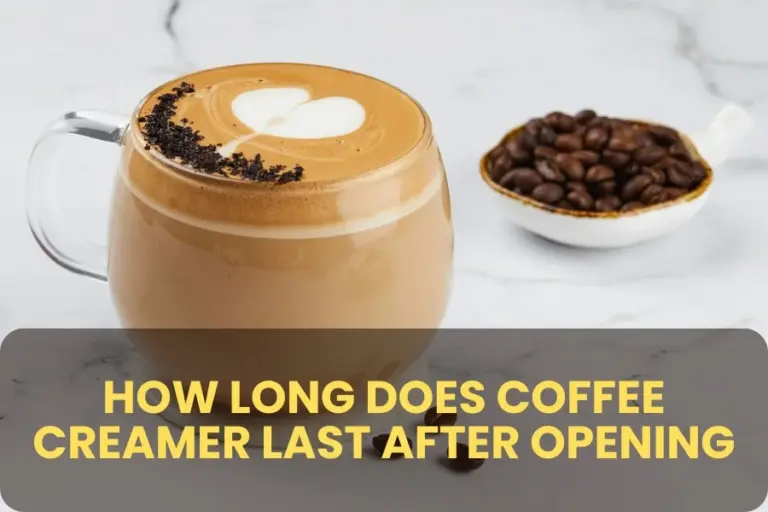What is Espresso? How make and top 10 delicious espresso
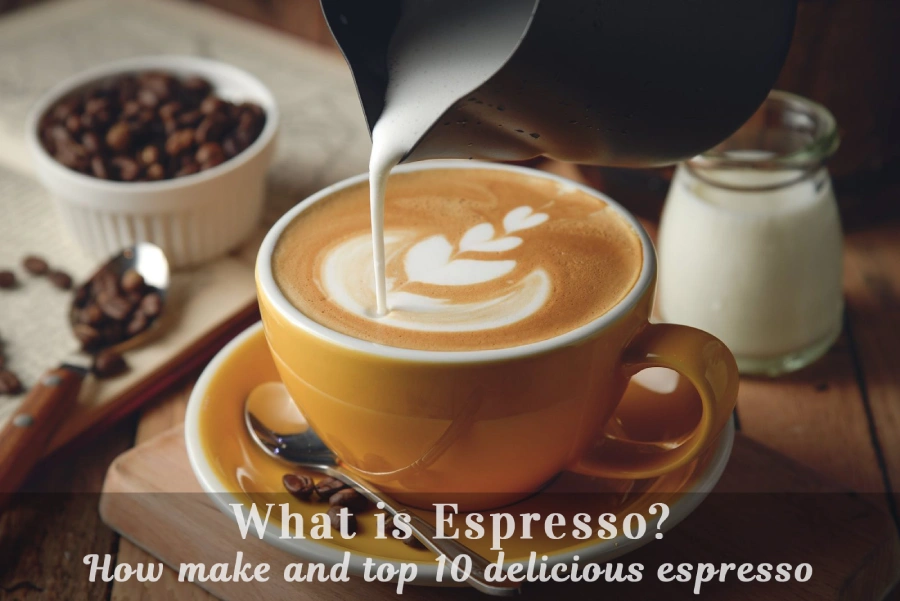
As a coffee lover, you’re probably very familiar with espresso in your caffeine journey. But, exactly what is espresso? And why is it so essential in life?
In this article, we will introduce you to the world of espresso, from its origins to the variety behind creating the perfect cup of coffee and ultimately the drinks that can be paired with espresso. Whether you are a culinary critic of coffee or just an ordinary person who drinks it every day, you understand that special types of coffee will help you enjoy and love coffee more in your life.
So, grab your favorite cup and start your journey to enjoy delicious 1-0-2 flavors right away!
What is Espresso?
Espresso is a concentrated coffee made from a specific type of roasted coffee beans combined with a specialized espresso machine. Finely ground coffee beans are packed tightly into a portafilter and pressed through hot water at high temperatures (about 9-15 bar). After that, you’ll have to create a small coffee cup with rich texture and flavor.
A one-ounce cup of espresso-concentrated, full-bodied coffee contains about 64 milligrams of caffeine. In each brew, it will contain 29-100mg of caffeine and fluctuates at 75 milligrams. If double trip, it is from 58-185 mg, unlike regular coffee which contains 80 to 200mg per shot. That’s more concentrated than regular black coffee ( approximately 12.5 milligrams per ounce).
Not only that, the texture of a short espresso also has a thick layer of creamy crema—air bubbles combined with the dissolved oils of finely ground coffee. It adds to the rich, complex flavor and contributes to a long, satisfying aftertaste.

Origin of Espresso Coffee
Espresso originates from Italy and was invented by Luigi Bezzera in Milan. He revolutionized coffee making by applying steam to quickly create a concentrated shot of “pressed coffee,” the meaning behind the term “caffé espresso.”
Demand for coffee increased in the late 1800s – early 1900s and it quickly became popular in Italian beverage shops and households. As the world modernizes, the brew methods also become better, that’s why it is a long-time favorite in the F&B industry.
How to Prepare Coffee Espresso
In this section, we will guide you through the steps of preparation to make a delicious cup of espresso right at home. Below are some key steps for it:
Step 1: Grind the Beans
Let’s start with freshly roasted coffee beans. Use a blender to grind the seeds into a fine powder of moderate size.
Step 2: Dose and Tamp
Measure the amount of ground coffee (14-18 grams) using the portafilter and evenly distribute the powder. Compress the coffee into a solid mass so that when the water flows down, it will absorb the coffee flavor more evenly.
Step 3: Brew coffee
Secure the portafilter to the machine group head and begin brewing coffee by activating the machine’s pump, which forces hot water (190°F or 90°C) through the compacted coffee grounds.
Step 4: Extract
Coffee begins to extract within the first few seconds into a steady stream. Place the cup under the portafilter for 25s -30s, and you will get a standard cup of espresso, thick like syrup and rich in flavor.
Step 5: Enjoy
The result is a rich cup of coffee topped with crema for a rich flavor and soft mouthfeel. Enjoy a cup of espresso slowly and comfortably, and you will see the beauty of life.
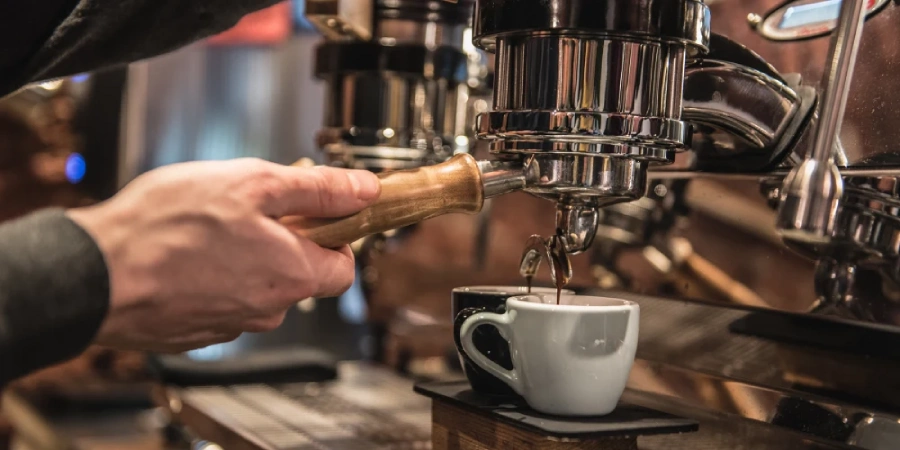
The Difference between Espresso and Regular Coffee
The difference between espresso and regular coffee is a hot topic among coffee fans. Both drinks share a common origin: coffee beans. But, their prep methods, flavors, and even the beans can vary greatly. And, here’s a closer look at the differences between them:
Roast
When roasted, espresso beans are made longer and darker than regular coffee beans. This is the difference that makes it reduce acidity and increase richness, giving it a unique feeling. A little tip to identify which beans are roasted properly is when you see the word Espresso on the packaging, proving that the coffee beans here are roasted in their own way.
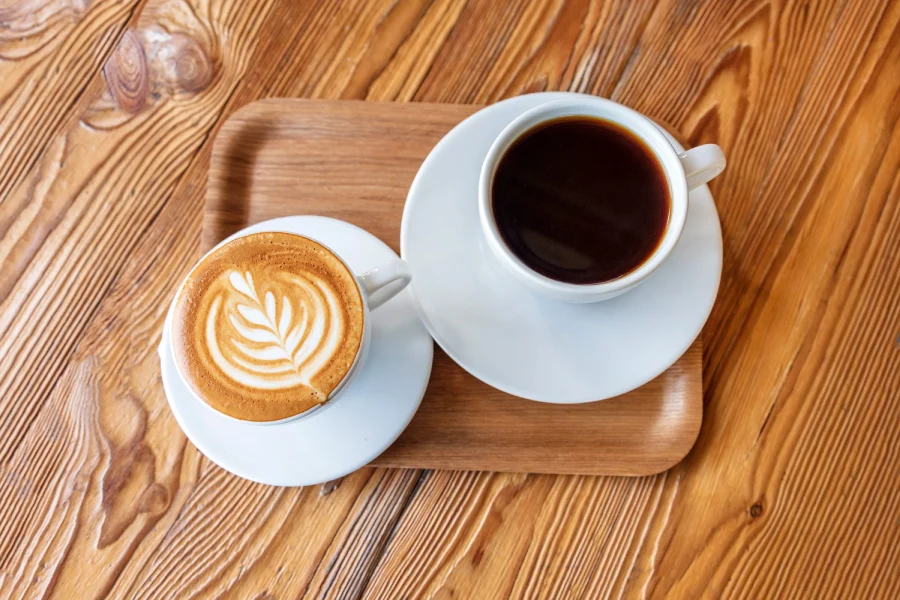
Grind
The texture of regular brewed coffee is more like sand, as opposed to the fine powder it resembles. The brewing process requires very tight compression of coffee grounds, which means a shorter contact time for the water to flow through.
Brewing Method
In the preparation method, we can clearly see the difference between them. Meanwhile, regular types of caffeine can be prepared in many different ways such as French press, drip, or pour-over technique. On the contrary, espresso can only use its specialized machinery to create a flavorful concentrate.
Taste
Unique brewing methods contribute to the distinct taste between espresso and regular coffee. With espresso, it has been known for its rich flavor with a lower aftertaste and acidity than filter coffee. Roasting each bean more intensely will bring out its best. The heat will increase the oil in the beans will create a delicious taste that many find appealing.
Serving size
The contrast between espresso and coffee extends to their serving sizes. While a standard cup of coffee contains a generous 8 ounces, espresso has a concentrated shot of 1 ounce. The significant difference in size exists because it brings the bolder, richer flavor and greater density pack more punch into a smaller package.
Comparison table of espresso and regular coffee
| Feature | Espresso | Regular Coffee |
| Roast Level | Often darker roasted | Varies from light to dark |
| Grind Size | Finely ground | Coarsely ground |
| Brewing Method | Using high pressure | Using gravity |
| Serving Size | Typically 1-2 ounces per shot | Usually 8 ounces per cup |
| Concentration | Highly concentrated, rich flavor | Less concentrated, milder flavor |
| Texture | Thick and smooth with a layer of crema | Lighter and more watery |
| Common uses | Base for drinks like lattes, cappuccinos, breves, etc | Base for drinks like lattes, cappuccinos, breves, etc. |
Top 10 Espresso Drinks You Should Enjoy
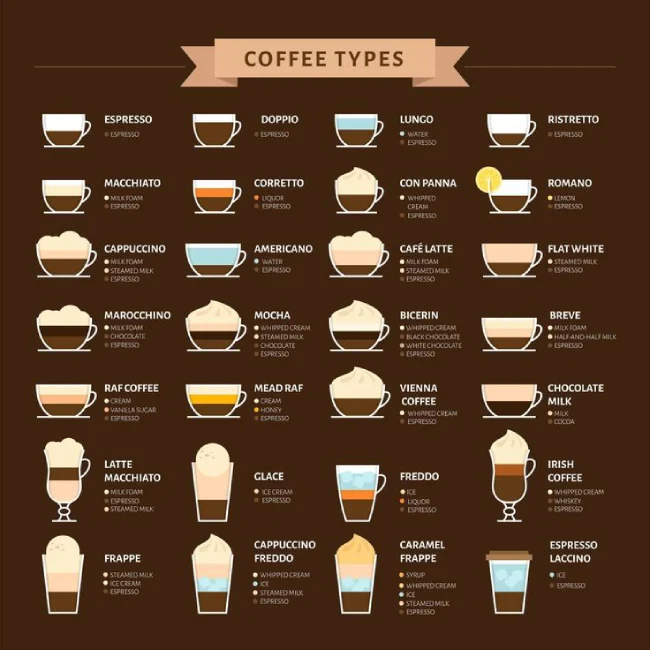
While perfect when enjoyed neat in small amounts, the espresso beverage also serves as a strong base for classic coffee favorites like cappuccino, latte, and Americano,… These types of drinks are very popular with people and are always mentioned in daily life. And following below, we will introduce you to the top 10 espresso drinks that you can enjoy:
- Espresso: Concentrated, pure coffee mixed with hot water to create
- Doppio: also known as a “double cup” with the overall short being doubled naturally providing a richer flavor and more caffeine, often prepared with double the amount of coffee grounds.
- Lungo: Also known as “long short”, It is made with more water than regular short, combined with thick crema, giving it a slightly bitter taste.
- Ristretto: The drink type has a more bitter flavor than the original, as the amount of coffee is the same but there is less water when preparing.
- Americano: diluted with hot water. It has the same strength as drip coffee but retains the original flavor.
- Cappuccino: Served in a 150ml/5oz cup, it combines equal parts espresso, steamed milk, and foamed milk, creating a smooth texture.
- Latte: Just like cappuccino, latte also has those 3 ingredients, but the proportion of steamed milk is higher, making the flavor richer than usual.
- Macchiato: The classic macchiato is just a shot of espresso with some milk foam on top, which is more bitter than lattes and cappuccinos.
- Flat White: It has the same ingredients as a cappuccino but with less milk foam on top. Flat White is for those who want to drink cappuccino but prefer the rich, sharp flavor of espresso in milk
- Affogato: A dessert drink made by “dipping” a scoop of vanilla ice cream into hot espresso. It has a blend of sweet and bitter flavors. A cookie garnish adds to its taste, aroma, and appearance.
Final Thought
Through this article, we have helped you understand more about what is espresso. It is not just a drink but also an art form that combines science, culture, and personal taste. You can enjoy them straight or in other forms of coffee processed indirectly through, its nuances will enhance your appreciation of the beverage. So next time you sip an espresso or brew your favorite drink at home. It only takes a moment to create that perfectly delicious cup!



